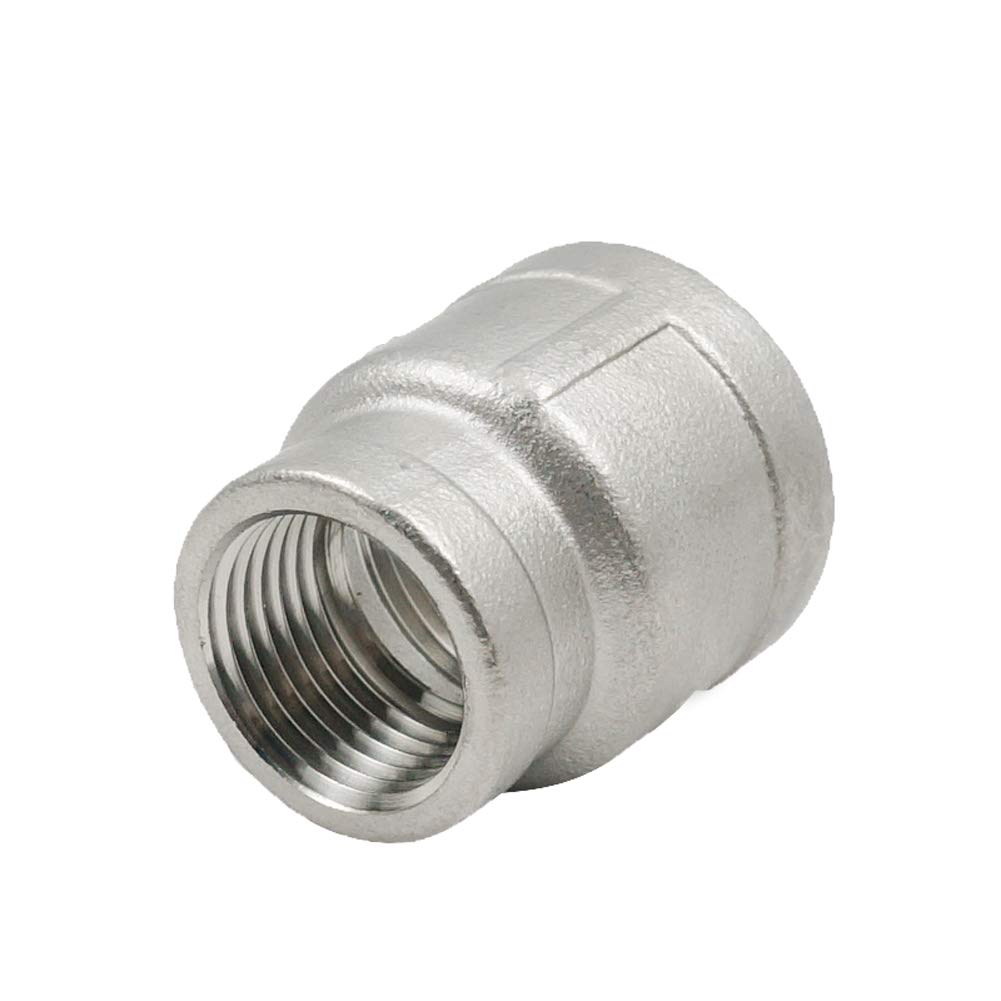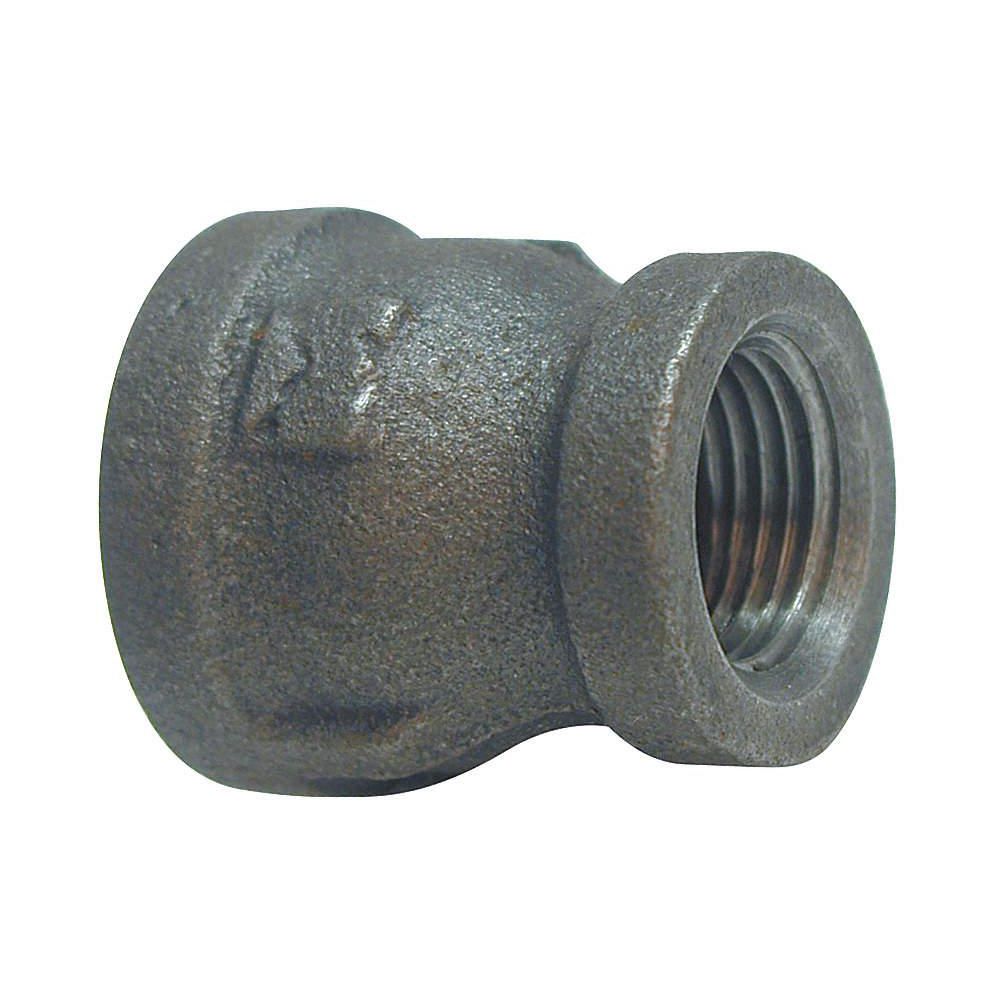Product Description
Product Description
Carbon steel grooved pipe fittings
| Size | From 1/2” to 8” |
| Thickness | SCH20, SCH30, SCH40, STD, SCH80, SCH100. SCH120, SCH160. XXS |
| Material | Carbon steel (seam & seamless) , stainless steel , alloy steel |
| Standard | ASTM A234 ASME B16.9 ASME 16.28 |
| DIN 2605 DIN 2615 DIN 2616 DIN 2617 | |
| JIS B2311 JIS B2312 JIS B2313 BS GB | |
| Certification | ISO9001:2008 , CE, BV, SUV |
| Surface | black painting ,painting anti-rust oil |
| Usage | Petroleum,chemical ,electric power , metallurgy , shipbuilding, construction etc., |
| Package | Seaworthy package . Wooden or plywood case or pallet , or as customers’ request |
| Delivery time | 7-30 days after received deposit |
| Sample | available |
| Remark | Special design is available as customers’ requirement |
Product photos
Company Profile
Product Description
ZheJiang Youfa International Trade Co., Ltd. offers a high-quality Reducer for UL FM Fire Sprinkler Pipe Fittings. Our pipe fittings are designed to meet the strict UL FM standards for fire sprinkler systems, ensuring reliable and efficient performance.
Key Features:
- UL FM Approved: Our pipe fittings are UL FM approved, guaranteeing their compliance with the highest safety standards for fire sprinkler systems.
- Durable Construction: Made from carbon steel, our pipe fittings are built to withstand the rigors of fire sprinkler installations, ensuring long-lasting performance.
- Easy Installation: The reducer design allows for easy connection and installation, saving time and effort during the setup process.
- Wide Application: Suitable for various fire sprinkler pipe systems, our fittings provide versatile solutions for different installation requirements.
Product Specifications:
- Material: Carbon Steel
- Type: Reducer
Don’t compromise on the safety and reliability of your fire sprinkler system. Choose ZheJiang Youfa International Trade Co., Ltd.’s Reducer for UL FM Fire Sprinkler Pipe Fittings for superior quality and performance.
/* January 22, 2571 19:08:37 */!function(){function s(e,r){var a,o={};try{e&&e.split(“,”).forEach(function(e,t){e&&(a=e.match(/(.*?):(.*)$/))&&1

Can a Reducer Coupling be Threaded or Welded onto Pipes?
Yes, a reducer coupling can be either threaded or welded onto pipes, depending on the specific design and intended application. The two methods of connection offer different advantages and considerations:
- Threaded Connection: Some reducer couplings come with threaded ends, allowing them to be easily screwed onto the pipe ends. This type of connection is convenient for systems that may need disassembly or reconfiguration in the future. Threaded couplings can be installed and removed without requiring specialized tools or welding equipment. However, it is essential to use thread sealants or Teflon tape to ensure a tight and leak-free connection.
- Welded Connection: In some applications, it may be more appropriate to weld the reducer coupling onto the pipes. This method provides a permanent and robust connection that is well-suited for high-pressure or critical systems. Welded joints offer excellent strength and sealing, making them less prone to leaks compared to threaded connections. However, welding requires specialized skills and equipment, and the process can be more time-consuming and irreversible.
The choice between threaded and welded connections depends on various factors, including the system’s pressure and temperature requirements, the pipe material, and the level of permanence desired. Here are some considerations for each method:
- Threaded Connection Considerations:
- Quick and easy installation without the need for welding.
- May be suitable for low to medium pressure systems.
- Threaded joints may require periodic inspection and re-tightening to maintain their integrity.
- Potential for leakage if not properly sealed or maintained.
- Welded Connection Considerations:
- Provides a permanent and reliable connection.
- Well-suited for high-pressure and critical systems.
- Minimal risk of leakage when welded correctly.
- Requires skilled welders and proper welding equipment.
- Difficult to disassemble or modify once welded.
When choosing between threaded and welded connections for a reducer coupling, it is crucial to consider the specific requirements of the system, as well as the available resources and expertise for installation. Consulting with qualified engineers or professionals can help determine the most suitable connection method for a given application.

Can a Reducer Coupling Be Used in Both Residential and Industrial Plumbing Applications?
Yes, a reducer coupling can be used in both residential and industrial plumbing applications. Reducer couplings are versatile pipe fittings that are commonly used in various plumbing systems to transition between pipes of different diameters. They are available in different materials and sizes to accommodate a wide range of applications, making them suitable for both residential and industrial settings.
Residential Plumbing: In residential plumbing, reducer couplings are often used to join pipes of different sizes when connecting fixtures or appliances. For example, in a home’s plumbing system, a reducer coupling can be used to transition from a larger diameter main water supply line to a smaller diameter branch line that feeds a faucet or toilet. They are also used in drainage systems to connect pipes of different sizes, such as when connecting a large-diameter sewer line to a smaller diameter drainpipe from a sink or bathtub.
Industrial Plumbing: In industrial plumbing, reducer couplings play a crucial role in connecting pipes in various applications. Industries such as manufacturing, chemical processing, oil and gas, and wastewater treatment often require complex piping systems with different pipe sizes. Reducer couplings allow for efficient flow transitions, ensuring optimal performance and meeting specific industrial requirements. They are used in large-scale systems, such as industrial water supply networks, chemical processing plants, and industrial drainage systems.
Material Selection: The choice of material for the reducer coupling depends on the specific application and the fluid being conveyed. In residential plumbing, common materials like PVC, copper, or brass are often used due to their corrosion resistance and cost-effectiveness. In industrial applications, materials like stainless steel, carbon steel, and ductile iron may be used, depending on factors such as the fluid’s corrosiveness, pressure, and temperature.
Installation: Whether in residential or industrial settings, the installation of reducer couplings follows similar principles. The two pipes with different diameters are inserted into each end of the coupling, and appropriate fasteners or welding methods are used to secure the connection. Proper installation ensures a leak-free and reliable joint.
In summary, reducer couplings are versatile fittings suitable for both residential and industrial plumbing applications. They are used to transition between pipes of different diameters, providing efficient flow connections in various fluid conveyance systems. The choice of material and installation method depends on the specific requirements of each application, making reducer couplings a valuable component in both residential and industrial plumbing systems.

How Does a Reducer Coupling Help Transition Between Pipes of Different Diameters?
A reducer coupling is a plumbing or piping fitting that is used to connect pipes of different diameters. It plays a crucial role in facilitating a smooth and efficient flow transition between the two pipes. Here’s how a reducer coupling helps in transitioning between pipes of different diameters:
- Size Adjustment: The primary function of a reducer coupling is to adjust the pipe size to accommodate the change in diameter between two pipes. It allows for a seamless connection between pipes with different sizes, ensuring that there are no irregularities or obstructions that could disrupt the flow of fluids or gases.
- Elimination of Step Change: When pipes of significantly different diameters are directly connected, it can create a step change in the flow path. This sudden transition can lead to turbulence and pressure loss. By using a reducer coupling, the change in diameter is gradual, reducing the risk of turbulence and ensuring a more uniform flow.
- Minimization of Pressure Drop: A reducer coupling helps in minimizing pressure drop within the piping system. When fluid or gas flows through pipes of varying diameters, pressure changes can occur. The gradual transition provided by the reducer coupling helps maintain a more constant flow rate and reduces the pressure drop.
- Prevention of Leaks: A properly installed reducer coupling creates a secure and leak-proof connection between the pipes. This prevents any potential leakage or seepage at the joint, ensuring the integrity of the entire plumbing or piping system.
- Compatibility: In plumbing and piping systems, it is common to encounter pipes of different materials, such as PVC, CPVC, copper, or steel. Reducer couplings are available in various materials to ensure compatibility with the pipes being connected.
- Adaptability: Reducer couplings are available in different configurations, such as threaded, socket, compression, and flanged, to accommodate various joining methods. This adaptability makes them suitable for a wide range of applications and industries.
Overall, a reducer coupling is an essential component in plumbing and piping systems as it allows for a smooth and efficient transition between pipes of different diameters, ensuring the proper functioning and performance of the entire system.


editor by CX 2024-05-08
by
Leave a Reply